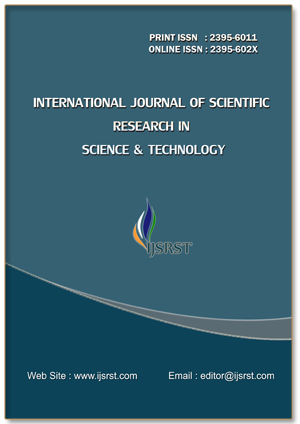Fabrication of MWCNT/S/AC Battery Electrodes Using the Doctor Blade Method with Cyclic Voltammetry (CV) Testing of KCL Electrolyte Variations to Determine Specific Capacitance Values
DOI:
https://doi.org/10.32628/IJSRST2512150Keywords:
Battery, Electrode, Electrolyte, Specific CapacitanceAbstract
The increasing demand for energy storage has led researchers to try to find cathode materials that have the ability to increase specific capacitance. Sulfur-based electrodes are considered the right choice to overcome this problem; however, there are still weaknesses due to the insulating properties of sulfur and polysulfides. This study uses MWCNT and activated carbon materials, which are considered to be able to increase conductivity and minimize sulfur dissolution into the electrolyte, which affects the specific capacitance value. Electrolytes as a means of ion transport also greatly affect the performance of battery electrodes. Electrochemical analysis was carried out by conducting CV tests using KCl electrolyte solutions at concentrations of 0.05 M, 0.25 M, and 0.5 M. The results showed that the use of KCl electrolyte solutions on the electrodes showed an increase in specific capacitance values along with increasing electrolyte concentrations. With each concentration, the specific capacitance values were 0.1725 F/g⁻¹, 0.3593 F/g⁻¹, and 0.5336 F/g⁻¹.
Downloads
References
S. Gohari, M. Tokur, M. R. Yaftian, H. Shayani-Jam, H. Akbulut, and M. R. Sovizi, “Advancements in The Long-Term Performance of Aqueous Lithium-Sulfur Batteries,” Diam. Relat. Mater., vol. 141, no. October 2023, 2024, doi: 10.1016/j.diamond.2023.110615. DOI: https://doi.org/10.1016/j.diamond.2023.110615
S. Ju et al., “Recognizing The Contrasting Role of N, O Dual-Coordinated Single-Atom Iron Catalyst In Li−S and Al−S Batteries,” Energy Storage Mater., vol. 56, no. August 2022, pp. 1–12, 2023, doi: 10.1016/j.ensm.2023.01.002. DOI: https://doi.org/10.1016/j.ensm.2023.01.002
A. Subagio, H. R. Taufiq, A. Khumaeni, N. A. K. Umiati, and K. Adi, “Simple Method for Making MWCNTs / Au-NPs- Based Biosensor Electrodes,” Mater, Res. Express, 2022, doi: https://doi.org/10.1088/2053-1591/ac4b75. DOI: https://doi.org/10.1088/2053-1591/ac4b75
A. D. Setyoputra, H. Ruffa, H. Sutanto, and A. Subagio, “The Characterisation of MWCNT-rGO-TiO2 Nanocomposite as Potential Electrode Material for Hybrid Supercapacitor,” Int. J. Electrochem. Sci., vol. 17, 2022, doi: 10.20964/2022.05.10. DOI: https://doi.org/10.20964/2022.05.10
A. Subagio, Y. Al Hakim, M. W. Ristiawan, M. A. Kholil, and Priyono, “Structural and Morphological Properties of MnO2/MWCNT Composite Grown Using the Hydrothermal Method for Supercapacitor Application,” Int. J. Electrochem. Sci., vol. 14, no. 10, pp. 9936–9947, 2019, doi: 10.20964/2019.10.52. DOI: https://doi.org/10.20964/2019.10.52
G. H. Kim et al., “Enhanced Performance of Lithium-Sulfur Battery Cathode Via Composition Optimization Using Modified MWCNTs As A Conductive Material And Poly (Acrylic Acid) As A Binder,” Int. J. Electrochem. Sci., vol. 18, no. 8, p. 100217, 2023, doi: 10.1016/J.IJOES.2023.100217. DOI: https://doi.org/10.1016/j.ijoes.2023.100217
A. Borenstein, O. Hanna, R. Attias, S. Luski, T. Brousse, and D. Aurbach, “Carbon-Based Composite Materials for Supercapacitor Electrodes: A Review,” J. Mater. Chem. A, vol. 5, no. 25, pp. 12653–12672, 2017, doi: 10.1039/c7ta00863e. DOI: https://doi.org/10.1039/C7TA00863E
J. P. S and S. D. S, “Supercapacitor: Basics and Overview,” no. December, 2019, [Online]. Available: www.joics.org.
M. Salomon, “Electrolytes | Overview,” Encycl. Electrochem. Power Sources, pp. 134–139, 2009, doi: 10.1016/B978-044452745-5.00009-5. DOI: https://doi.org/10.1016/B978-044452745-5.00009-5
X. Bai et al., “Boosting The Photovoltaic Performance of Doctor-Bladed Organic Solar Cells Using A Low-Boiling Solvent Additive,” Org. Electron., vol. 118, no. March, pp. 2–9, 2023, doi: 10.1016/j.orgel.2023.106794. DOI: https://doi.org/10.1016/j.orgel.2023.106794
S. Xiu et al., “One-Step Synthesis of Nitrogen and Sulfur Co-Doped Hierarchical Porous Carbon Derived From Acesulfame Potassium As A Dual-Function Agent for Supercapacitors and Lithium‑Sulfur Batteries,” J. Energy Storage, vol. 66, no. April, pp. 1–10, 2023, doi: 10.1016/j.est.2023.107214. DOI: https://doi.org/10.1016/j.est.2023.107214
N. Elgrishi, K. J. Rountree, B. D. McCarthy, E. S. Rountree, T. T. Eisenhart, and J. L. Dempsey, “A Practical Beginner’s Guide to Cyclic Voltammetry,” J. Chem. Educ., vol. 95, no. 2, pp. 197–206, 2018, doi: 10.1021/acs.jchemed.7b00361. DOI: https://doi.org/10.1021/acs.jchemed.7b00361
Downloads
Published
Issue
Section
License
Copyright (c) 2025 International Journal of Scientific Research in Science and Technology

This work is licensed under a Creative Commons Attribution 4.0 International License.
https://creativecommons.org/licenses/by/4.0





